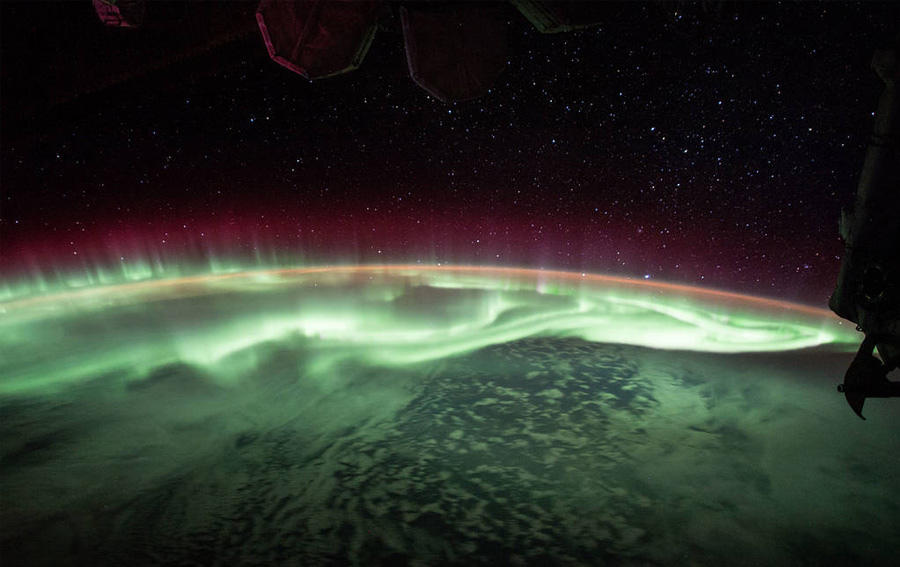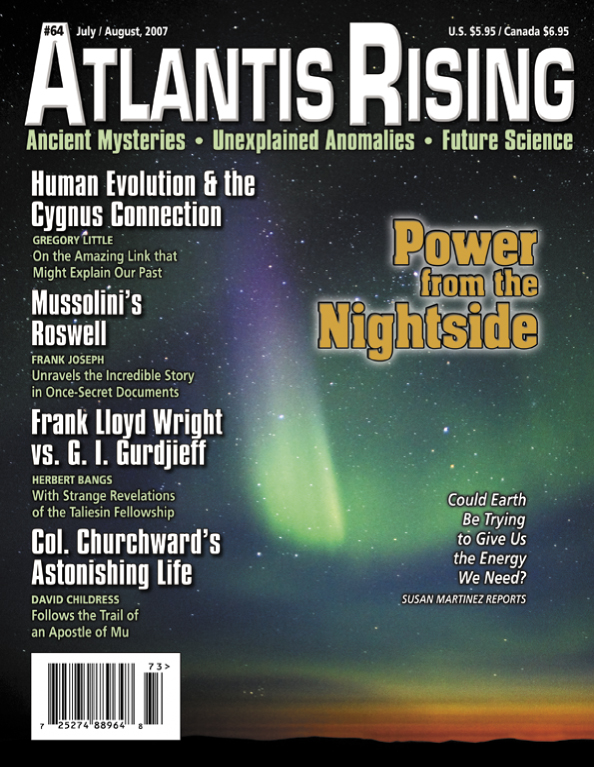Strong Winds Powering Auroras Says NASA - ATLANTIS RISING THE RESEARCH REPORT (original) (raw)

What happens on Earth doesn’t stay on Earth.
Using observations from NASA’s ICON mission, scientists presented the first direct measurements of Earth’s long-theorized dynamo on the edge of space: a wind-driven electrical generator that spans the globe 60-plus miles above our heads. The dynamo churns in the ionosphere, the electrically charged boundary between Earth and space. It’s powered by tidal winds in the upper atmosphere that are faster than most hurricanes and rise from the lower atmosphere, creating an electrical environment that can affect satellites and technology on Earth.
The new work, published today in Nature Geoscience, improves our understanding of the ionosphere, which helps scientists better predict space weather and protect our technology from its effects.
Launched in 2019, ICON, short for Ionospheric Connection Explorer, is a mission to untangle how Earth’s weather interacts with the weather in space. Radio and GPS signals zip through the ionosphere, which is home to auroras and the International Space Station. Empty pockets or dense swells of electrically charged particles can disrupt these signals.
Scientists who study the atmosphere and space weather have long included Earth’s dynamo in their models because they knew it had important effects. But with little information, they had to make some assumptions about how it works. Data from ICON is the first concrete observation of winds fueling the dynamo, eventually influencing space weather, to feed into those models.
“ICON’s first year in space has shown predicting these winds is key to improving our ability to predict what happens in the ionosphere,” said Thomas Immel, ICON principal investigator at University of California, Berkeley, and lead author of the new study.
An error occurred.
Try watching this video on www.youtube.com, or enable JavaScript if it is disabled in your browser.
This data visualization shows the ICON spacecraft in orbit around Earth. The green arrows show the strong, high-altitude winds—known as atmospheric tides—detected by ICON’s MIGHTI wind imager. These winds are not uniform and can be altered by changes in the lower-altitude atmosphere. This, in turn, changes the particle motion high in the ionosphere. Changes in plasma at 370 miles above Earth’s surface was also detected by ICON as shown in red. Magnetic field lines are shown in magenta and turn yellow as measurements of winds detected by MIGHTI (green arrows) influence the direction of plasma (red arrows).
Credits: NASA’s Scientific Visualization Studio/William T. Bridgman
Download this video in HD formats from NASA Goddard’s Scientific Visualization Studio
Earth’s sky-high generator
The ionosphere is like a sloshing sea of electrically charged particles, created by the Sun and intermixed with the neutral upper atmosphere. Sandwiched between Earth and space, the ionosphere responds to changes from both the Sun above and Earth below. How much influence comes from each side is what researchers are interested in figuring out. Studying a year of ICON data, the researchers found much of the change they observed originated in the lower atmosphere.
Generators work by repeatedly moving an electricity-carrying conductor — like a copper wire — through a magnetic field. Filled with electrically charged gases called plasma, the ionosphere acts like a wire, or rather, a tangled mess of wires: Electricity flows right through. Like the dynamo in Earth’s core, the dynamo in the atmosphere produces electromagnetic fields from motion.
Strong winds in the thermosphere, a layer of the upper atmosphere known for its high temperatures, push current-carrying plasma in the ionosphere across invisible magnetic field lines that arc around Earth like an onion. The wind tends to push on chunky, positively charged particles more than small, negatively charged electrons. “You get pluses moving differently than minuses,” said co-author Brian Harding, a physicist at University of California, Berkeley. “That’s an electric current.”
Issue #64
“Power from the Night Side” by Susan Martinez, Ph.D.
